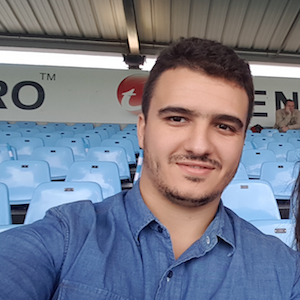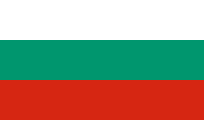Innovating Border Protection Systems with Modern Sensors
Filip Tsvetanov
Description
Keywords: innovation; sensors networks; border protection; security
H2020 challenge: Secure societies – Protecting freedom and security of Europe and its citizens
Knowledge and skills (P: prerequisite; D: desirable, but not necessary): Sensor networks (P), Wireless engineering (D), Network security (D), Cloud technology (D)
The European Union is subjected to continuous interest and pressure from many imigrants seeking illegal crossing of borders. To improve the border security of the European Union, we are working intensively on building innovative systems based on smart sensors and devices for the identification and detection of illegal border crossing.
We seek to increase the reliability and efficiency of border control measures by using integrated wireless networks of intelligent sensors, modern radars, cameras and thermal motion sensors in remote border areas, which are typically difficult to secure and monitor. Such surveillance networks are constructed of battery powered intelligent radio-based sensors to provide a computerized decision-making support to border control authorities. However, one challenge for the employment of such technology is to provide a secure end-to-end encrypted communication of various types of online information, including movement, humidity and temperature. Another challenge is to extend the battery life of the sensors in these continuously monitoring systems (i.e., operating 24/7), e.g., by allowing each sensor to wake up from its sleep mode only when movement is detected or when devices transmit routine checks.
Sensors transmit real-time data (e.g., automated number plate recognition, face recognition, gait recognition and complex activity recognition). Suspicious events (or even non-suspicious events such as false alerts caused by wild animals) can direct the operator’s attention and are saved in the database for post-hoc analysis. The employment of surveillance wireless networks based on radio‑controlled and long-lasting battery-fed sensors offers an efficient way towards an effective control of illegal immigration, drug trafficking, and other security breaches along the borders of European Union.
One possible approach to solving this Case Study is the design and building of sensor networks of intelligent sensors and actuators for tracking, monitoring and prevention of illegal crossing of European borders.
INNOSOC students, supervised by INNOSOC lecturers, will collaborate on providing a possible solution to this Case Study. These activities will be conducted as a part of the ERASMUS+ blended mobility and will be finalized during the INNOSOC Valencia 2017 workshop in late May 2017.
The relationship of the Case Study with the challenges of the H2020 is its connection with topics of Border Security and External Security.
The Case Study covers the application of new technological solutions and building the next generation of information and communication systems from multiple sensor networks. Sensor networks, built on the borders, may have different functions such as sensor networks to detect smuggled goods, sensor networks to detect movement of people, network surveillance, etc. The multitude of sensor networks can be built from countries with a common border. Each sensor network can collect, transmit and process information on the state border by cloud structures. This information can be analysed to take preventive or real measures of various border guard services of the Member States of the European Union.
This Case Study will lead to intercultural communication between project participants. It focuses on building intercultural team building, which will discuss challenges for the application of innovative sensor networks to increase border security and protect people in EU. Furthermore, it will discuss the impact of innovative sensor networks on reducing illegal immigration flow conveyance of smuggled goods across the border, human trafficking, as well as specific issues related to energy consumption and security of transmitted data in sensor networks. Implementation of innovations in the design, modelling, simulation and practical construction of sensor networks with intelligent sensors and actuators and a new generation of systems will create a “smart borders” for protection and security of EU citizens.
Data collected by the sensors is large in size (i.e., Big Data). Resource constrains include limited amount of energy, restricted communication bandwidth and limited processing and storage of data in each sensor node. A new paradigm which has to be used is the application of cloud computing in the work of wireless sensor networks (WSN) or Sensors Cloud computing. This computing paradigm enables the use of sensor networks set up by EU Member State by acquiring right of access to services in Sensor Cloud. The sensor cloud consists of various WSNs, but provides a homogeneous user access to data in the cloud in real time (Figure 2). The Sensor Cloud must quickly resolve various user tasks to meet the needs of different users at the same time. This feature of sensing clouds requires development of optimal scheme in WSNs. Construction of optimal scheme depends on the location and density of the sensors in the network, what relates to the efficiency of energy resources use.
- Border security Using Wireless integrated system (WINS), (2016), https://www.slideshare.net/AnkitBhardwaj68/boder-security-using-wireless-integrated-system-wins, https://www.scribd.com/doc/49155901/Border-Security-Ppt#
- Rashmi Dalvi, Energy efficient scheduling and allocation of tasks in sensor cloud, (2014). Masters Theses. Paper 7324. http://scholarsmine.mst.edu/cgi/viewcontent.cgi?article=8323&context=masters_theses
- Integration WSN with Cloud computing, https://www.slideshare.net/vintesh/sensor-cloud-infrastructure-small-survey-report
- A survey on architectures applications and issues of sensor cloud, https://www.slideshare.net/iaeme/a-survey-on-architectures-applications-and-issues-of-sensor-cloud
- Poolsappasit N., Kumar V., Madria S., Chellappan S., Challenges in Secure Sensor-Cloud Computing, Book Title, 8th VLDB Workshop, SDM 2011, Seattle, WA, USA, September 2, 2011, Proceedings, Pages pp 70-84
- Subashini S., Kavitha V, A survey on security issues in service delivery models of cloud computing ,Journal of Network and Computer Applications, Volume 34, Issue 1, January 2011, Pages 1–11.
- Atif Alamri, Wasai Shadab Ansari, Mohammad Mehedi Hassan, M. Shamim Hossain, Abdulhameed Alelaiwi, and M. Anwar Hossain, A Survey on Sensor-Cloud: Architecture, Applications, and Approaches, International Journal of Distributed Sensor Networks, Volume 2013, Article ID 917923, 18 pages. http://journals.sagepub.com/doi/full/10.1155/2013/917923
- http://dspace.cusat.ac.in/jspui/bitstream/123456789/2357/1/BORDER%20SECURITY.pdf
Questions that need answers
- What is the role of ICT for border security?
- What innovative technologies are used for increasing security of your national borders?
- What are challenges for the energy performance of sensor networks for security at the borders?
- What is the market situation in the appropriate components and intelligent sensors and actuators for sensor networks for border security?
- Justify the choice of an appropriate structure for cloud data sharing for specialized sensor networks.
- Who do you think are the most appropriate types of sensors for building sensor networks for border security? Give substantiated proposals
Case study supervisors

Filip Tsvetanov
Lecturer
Case study students

Illona Popić
INNOSOC 2017 Student

Mahmoud SEDJAR
INNOSOC 2017 Student

Mohamad Buchr Charaf
INNOSOC 2017 Student











